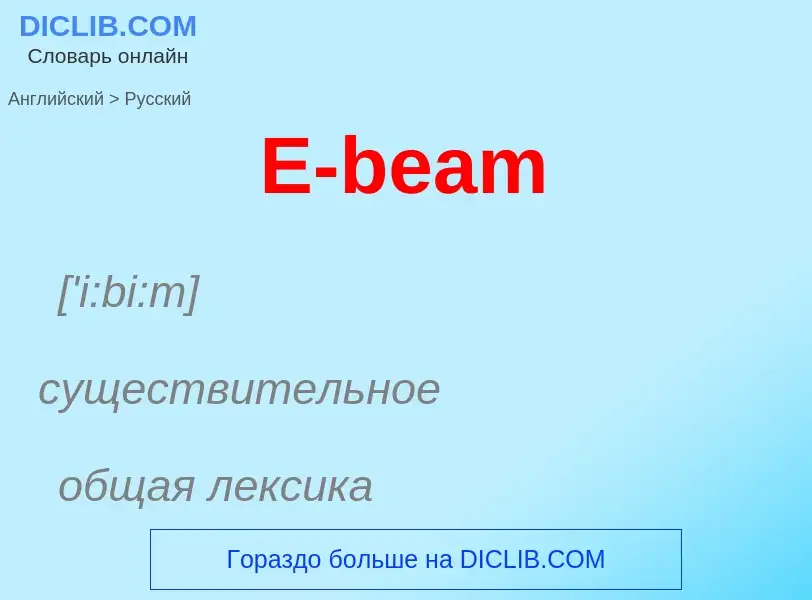Traducción y análisis de palabras por inteligencia artificial ChatGPT
En esta página puede obtener un análisis detallado de una palabra o frase, producido utilizando la mejor tecnología de inteligencia artificial hasta la fecha:
- cómo se usa la palabra
- frecuencia de uso
- se utiliza con más frecuencia en el habla oral o escrita
- opciones de traducción
- ejemplos de uso (varias frases con traducción)
- etimología
E-beam - traducción al ruso
['i:bi:m]
существительное
общая лексика
электронный пучок
['i:bi:m]
существительное
общая лексика
электронный пучок
общая лексика
пучок электронов
медицина
электронный луч
Definición
1.
Wikipedia

Cathode rays or electron beam (e-beam) are streams of electrons observed in discharge tubes. If an evacuated glass tube is equipped with two electrodes and a voltage is applied, glass behind the positive electrode is observed to glow, due to electrons emitted from the cathode (the electrode connected to the negative terminal of the voltage supply). They were first observed in 1859 by German physicist Julius Plücker and Johann Wilhelm Hittorf, and were named in 1876 by Eugen Goldstein Kathodenstrahlen, or cathode rays. In 1897, British physicist J. J. Thomson showed that cathode rays were composed of a previously unknown negatively charged particle, which was later named the electron. Cathode-ray tubes (CRTs) use a focused beam of electrons deflected by electric or magnetic fields to render an image on a screen.


![[[Glow discharge]] in a low-pressure tube caused by electric current. [[Glow discharge]] in a low-pressure tube caused by electric current.](https://commons.wikimedia.org/wiki/Special:FilePath/Glow discharge regions.jpg?width=200)
.jpg?width=200)
![Cathode rays travel from the cathode at the rear of the tube, striking the glass front, making it glow green by [[fluorescence]]. A metal cross in the tube casts a shadow, demonstrating that the rays travel in straight lines. Cathode rays travel from the cathode at the rear of the tube, striking the glass front, making it glow green by [[fluorescence]]. A metal cross in the tube casts a shadow, demonstrating that the rays travel in straight lines.](https://commons.wikimedia.org/wiki/Special:FilePath/Katódsugarak mágneses mezőben(2).jpg?width=200)
.jpg?width=200)
.jpg?width=200)
